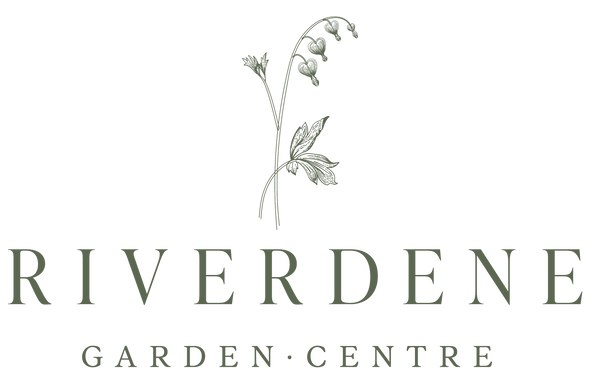Riverdene Garden Centre
Frontenac Grape
Frontenac Grape
Couldn't load pickup availability
Frontenac Grape — Overview & Key Traits
-
Origin: Developed by the University of Minnesota, Frontenac is a hybrid between Vitis riparia 89 and Landot 4511.
-
Cold Hardiness: Extremely cold-hardy — proven down to about –35 °F (~–37 °C) with minimal bud or vine damage.
-
Disease Resistance: Good resistance to downy mildew; moderate resistance to powdery mildew; not highly prone to botrytis.
-
Fruit / Wine Use:
• Small to medium blue-black berries, with loose to medium clusters.
• High skin-to-pulp ratio yields deep, intensely colored juice.
• Wines often have cherry, red fruit, plum notes; the high acidity makes it good for rosé, red, dessert, or ice wines.
• Because its acidity can remain high, patience in harvest timing is crucial.
Site Selection & Planting
-
Sunlight: Full sun (6+ hours) is essential for good ripening, sugar accumulation, and flavor development.
-
Soil:
• Well-drained soils are crucial. Avoid waterlogging.
• Soils of medium fertility work well; overly rich soils may promote excess vigor at the expense of fruit quality. (General grape practice) -
Protection / Microclimate: In cold or windy sites, planting on the south side of a building or with wind break can help moderate winter stress and increase heat accumulation.
-
Spacing & Support:
• Each vine should have adequate room for growth (often 6 ft or more horizontally).
• Use a sturdy trellis, wire system, or arbor to support vine weight and facilitate pruning / harvest.
Establishment & Early Care
-
Planting Time: In spring (after danger of hard frost) to permit root establishment before winter.
-
Initial Pruning: After planting, prune back the canes to promote root establishment (often to 1–2 buds) — encourage root growth before overhead growth begins. (General vineyard practice)
-
Mulching: Use organic mulch to conserve moisture and insulate roots, taking care not to suffocate the graft union or basal area.
-
Watering: During establishment, maintain regular soil moisture (but avoid saturating). Later, supplemental irrigation during dry spells helps yield and fruit quality.
Training, Pruning & Canopy Management
-
Growth Habit & Vigor: Frontenac is moderately vigorous.
-
Bud Break & Harvest Timing:
• Bud break: Early to mid-season.
• Harvest: Late September to October in many colder climates; in very cold areas may be pushed later to allow acidity drop. -
Pruning Systems:
• High Wire (HW) is recommended because of its semi-trailing habit.
• Geneva Double Curtain (GDC) may be possible on fertile sites.
• Vertical Shoot Positioning (VSP) is possible, but requires greater labor (because shoots have to be tucked, hedged, etc.). -
Spur / Cane Pruning: Spur pruning is common. Ideal spur density is about 3 to 3.5 spurs per linear foot of cordon.
-
Shoot thinning & cluster thinning: Maintain 2 shoots per spur to avoid overcrowding; also thin excessive clusters for balance and fruit quality.
-
Renewal pruning: Periodically remove older wood, renew cordons or trunks to maintain vine health and reduce disease pressure.
Pest & Disease Management
-
Common Issues / Susceptibilities:
• Downy mildew: good resistance in Frontenac.
• Powdery mildew: moderate resistance.
• Botrytis (bunch rot): less prone but still possible in wet seasons. -
Cultural Controls:
• Ensure good air circulation via proper spacing and pruning
• Avoid overhead watering so foliage remains drier
• Remove and destroy diseased or dead canes
• Use fungicide sprays as needed (especially in wet seasons) -
General Resilience: Frontenac is widely regarded as a “grower-friendly” variety due to its disease resilience and cold hardiness.
Harvest & Fruit Management
-
Maturity Criteria:
• Target sugar (°Brix) for typical red / dessert wine styles is ~22–25 °Brix.
• Balanced pH (ideally ~3.0 to 3.3) and acidity are key; acidity tends to be high and may fall later in the season. -
Harvest Timing: Wait long enough to allow acidity to drop, but avoid overripe or shriveled fruit. In milder seasons, clusters may hang late into fall (or be used for ice wine).
-
Cluster Handling: Gentle harvesting to avoid crushing; discard under-ripe or damaged berries.
-
Post-harvest Use: Works well in red wines, rosé, fortified wines, dessert wines, or ice wine styles.
Special Considerations for Swift Current / Prairie Climate
Because you’re in southwestern Saskatchewan, here are some additional tips for making Frontenac viable in your region:
-
Cold & Frost Risk: The extreme cold hardiness helps, but late spring frosts may damage early buds—consider slight elevation or microclimate protection.
-
Heat & Sun Exposure: Ensure full summer sun and good heat accumulation (south aspect) to support ripening.
-
Winter Protection: In very exposed sites, extra mulch or snow cover over roots/trunk helps buffer winter shock.
-
Soil Prep: Prairie soils may be heavier or drier—improve texture and drainage with organic matter.
-
Water Management: Summers can be dry—ensure supplemental irrigation, especially during fruit development.
-
Training / Trellis Strength: Because vines are vigorous, robust trellis systems are needed to avoid sagging or breakage.
